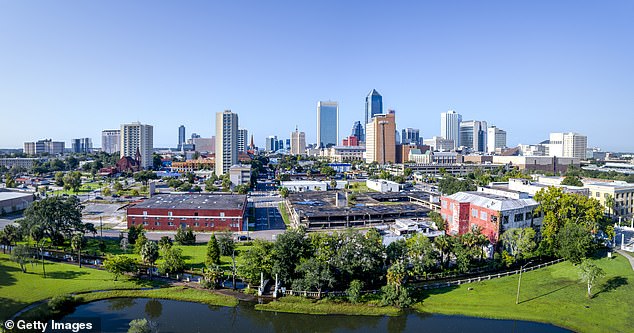Potential home buyers may want to turn their attention to the South, as new data shows it is undergoing an affordable housing boom.
About 56.7 percent of all available homes in April were located in southern states, according to a New report from Realtor.com.
Available inventory had increased 19.7 percent year over year, while it increased 18.4 percent in the Midwest, 7.5 percent in the West and 2.9 percent in the Northeast.
The nationwide housing shortage has been a determining factor in keeping prices artificially high in the face of rising mortgage rates.
However, Realtor.com’s analysis suggests the trend is changing. In the past three months, the number of homes priced between $200,000 and $350,000 entering the market surpassed all other price categories.
Potential home buyers may want to turn their attention to the South, as new data shows it is undergoing an affordable housing boom. Austin (pictured) saw its new home listings grow 36.1% year-over-year

About 56.7 percent of all available homes in April were located in southern states, according to a new report from Realtor.com. New listings in Atlanta (pictured) are up 27.4 percent from last year
The southern metropolitan areas that experienced the greatest inventory growth were located in Florida.
Tampa saw a 69.5 percent increase in available housing, while Orlando and Jacksonville saw 64.2 percent and 59.1 percent respectively.
Realtor.com Chief Economist Danielle Hale said: ‘The number of homes actively for sale was noticeably higher compared to last year.
‘Sellers continued to list homes at a higher rate than last year. This has led to a promising rise in more affordable homes for sale, especially in the south.’
Overall, home prices rose seasonally from $424,900 in March to $430,000 in April, a figure that remained stable from last year.
“On the one hand, there is a small contingent of buyers who are really in favor of housing prices collapsing so that affordability improves so they can become homeowners,” Hale said.
‘This group is probably disappointed by the fixed price. But when affordability is at long-term lows, a stable price trend is one way to correct the market.’

The nationwide housing shortage has been a determining factor in keeping prices artificially high in the face of rising mortgage rates. Dallas (pictured) saw the number of available homes increase by 20.7%

The number of new homes for sale in Jacksonville, FL (pictured) grew 22.5% in the last year
The housing market has remained surprisingly buoyant despite experts predicting that high mortgage rates would dampen demand.
The average rate on a 30-year fixed-rate mortgage is currently 7.17 percent, according to data from Freddie Mac.
Mortgage lending has risen due to the Federal Reserve’s aggressive tightening cycle, which has driven interest rates to a 23-year high.
In real terms, it means that a buyer purchasing a $400,000 property with a 10 percent down payment would face monthly payments of $2,436.
But if the same person had bought a property in April 2021, when rates were 2.98 percent, they would pay just $1,513 a month.
Economists predicted the trend would create a “lock-in effect,” as buyers who took out 30-year loans when rates were at record lows are now reluctant to give up their cheap deals.
But the housing shortage has kept prices high despite declining demand.
What’s more, buyers have been buoyed by expectations that the Federal Reserve will cut interest rates this year.


